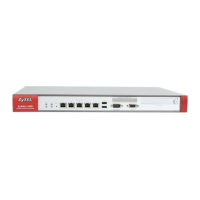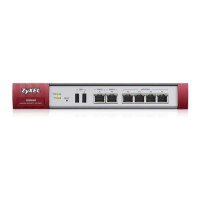ZyWALL/USG Series User’s Guide
359
CHAPTER 11
Routing
11.1 Policy and Static Routes Overview
Use policy routes and static routes to override the ZyWALL/USG’s default routing behavior in order
to send packets through the appropriate interface or VPN tunnel.
For example, the next figure shows a computer (A) connected to the ZyWALL/USG’s LAN interface.
The ZyWALL/USG routes most traffic from A to the Internet through the ZyWALL/USG’s default
gateway (R1). You create one policy route to connect to services offered by your ISP behind router
R2. You create another policy route to communicate with a separate network behind another router
(R3) connected to the LAN.
Figure 251 Example of Policy Routing Topology
Note: You can generally just use policy routes. You only need to use static routes if you
have a large network with multiple routers where you use RIP or OSPF to
propagate routing information to other routers.
11.1.1 What You Can Do in this Chapter
•Use the Policy Route screens (see Section 11.2 on page 361) to list and configure policy routes.
•Use the Static Route screens (see Section 11.3 on page 368) to list and configure static routes.

